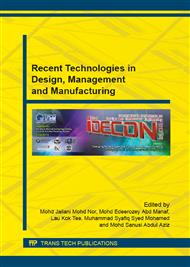p.313
p.318
p.324
p.329
p.333
p.341
p.347
p.352
p.358
Risk Screening as Input for Risk Assessment of Rotating Equipment
Abstract:
Risk assessment of complex rotating equipment is costly and time consuming process. Due to the reason, only critical equipment should be considered for detailed risk assessment. In this study, a semi-quantitative risk assessment model was developed to assess the risk of rotating equipment. The model consists of four main parts, initial risk screening, risk assessment, Failure Mode and Effect Analysis (FMEA) and maintenance strategy planning based on reliability concept. The model was used to assess risk of rotating equipment of power generation unit. Initial risk screening indicated compressor, combustion chamber, turbine and lube oil system of the power generation system as critical equipment under serious risks. Risk assessment using Borda ranking minimized the risk ties and showed compressor, combustion chamber and turbine were more critical as compared to lube oil system. Failure modes were identified using FMEA, 68% of the downtime was due to compressor, combustion chamber and turbine failure modes. Only 32% of the downtime was due to lube oil subsystems failure modes. Maintenance interval for compressor, combustion chamber and turbine was calculated 2 months and 5 months for lube oil system to reduce risk.
Info:
Periodical:
Pages:
333-338
Citation:
Online since:
May 2015
Authors:
Keywords:
Price:
Сopyright:
© 2015 Trans Tech Publications Ltd. All Rights Reserved
Share:
Citation:


